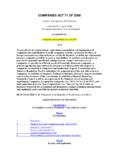Transcription of PERSONAL USE FLIGHTS - GKG Law, P.C.
1 Copyright 2004 Galland, Kharasch, Greenberg, Fellman & Swirsky, #236677v1 PERSONAL USE FLIGHTS : INCOME TAX CONSEQUENCES TO SHAREHOLDERS AND EMPLOYEES By Troy A. Rolf Presented by Keith G. Swirsky Galland, Kharasch, Greenberg, Fellman & Swirsky, 1054 Thirty-First Street, , Suite 200 Canal Square Washington, 20007 Tel: (202) 342-5251; Fax: (202) 965-5725 Copyright 2002 Galland, Kharasch, Greenberg, Fellman & Swirsky, Page 1 PERSONAL USE FLIGHTS : INCOME TAX CONSEQUENCES TO SHAREHOLDERS AND EMPLOYEES A. INTRODUCTION Aircraft owned and operated by corporations and other business entities are occasionally, and sometimes exclusively, used to provide transportation services to directors, officers, and employees of the entities for PERSONAL , rather than business, purposes.
2 One of the perceived benefits of owning and operating a business aircraft is that the aircraft may be used by selected individuals for transportation not only to business meetings, but to PERSONAL and leisure destinations as well. In fact, business-owned aircraft commonly grace airport parking ramps at virtually every popular vacation destination. PERSONAL use of business aircraft entails certain tax consequences. Precisely what those consequences will be depends on a number of factors. For example, will the aircraft be provided to the employee with or without a flight crew, and will the employee be required to compensate the company for the use of the aircraft? When an aircraft is made available for the PERSONAL use of a director, officer, or employee of a company, and the director, officer, or employee does not pay full value for the use of the aircraft, such use of the aircraft may constitute a fringe benefit taxable to the director, officer, or employee as ordinary income.
3 The discussion that follows addresses the issue of the imputation of fringe benefit income in respect of PERSONAL use of business aircraft by shareholders, directors, officers, and employees. The discussion first addresses the methods by which the amount of income to be imputed may be determined. Next, the discussion addresses rules governing mixed-use (business and PERSONAL ) FLIGHTS and the consistency rules. Last, the discussion addresses permitted methods for reducing the amount of income that must be imputed to directors, officers, and employees. B. VALUATION RULES The Internal Revenue Code specifies that a taxpayer's gross income includes fringe benefits received as compensation for Treasury regulations generally provide that the value of a fringe benefit for purposes of determining gross income equals the amount by which the fair market value of the fringe benefit exceeds the sum of the amount, if any, the recipient paid for the benefit, plus the amount, if any, the recipient may exclude from gross income under any other provision of Subtitle A of the Internal Revenue From this regulation, it is clear that the method by which a value for a fringe benefit is determined may greatly affect the income tax liability of the recipient of the fringe benefit.
4 Three specific valuation methods are relevant in the business aviation context: the fair market valuation rule for use of an employer-provided aircraft for which the employer does 1 ' 61(a)(1). 2 Treas. Reg. ' (b). Copyright 2002 Galland, Kharasch, Greenberg, Fellman & Swirsky, Page 2 not provide a pilot3; the fair market valuation rule for FLIGHTS on an employer-provided piloted aircraft4; and the "Non-commercial flight Valuation Rule". Each of these is discussed separately below. 1. Fair Market Valuation Rule (Dry Lease) Occasionally a business entity that owns or operates a business aircraft will provide such aircraft to a director, officer, or employee of the company without a flight crew on a Dry Lease basis.
5 The lease of the aircraft may or may not be pursuant to a written lease This type of transaction is probably most common where the lessee-director, lessee-officer, or lessee- employee is properly licensed and qualified to operate the aircraft personally, but in some situations, a lessee-director, lessee-officer, or lessee- employee may separately contract for the services of a qualified pilot. However, if the lessee-director, lessee-officer, or lessee- employee employs the same pilot who normally operates the aircraft for the lessor, the transaction may be deemed to be a Wet Lease notwithstanding the formal separation of the aircraft lease and the pilot employment agreement into separate transactions. The fair market value of the use of an aircraft without a flight crew, for fringe benefit purposes, is equal to the amount that an individual would have to pay in an arm's length transaction to lease the same or comparable aircraft on the same or comparable terms for the same period in the geographic area in which the aircraft is If a use of the aircraft benefits more than one employee , the value of the flight is allocated among the employees benefitted on the basis of the relevant facts and 2.
6 Fair Market Valuation Rule (Wet Lease) The rules for valuing a PERSONAL -use flight of a business aircraft, where the aircraft is provided to an employee with a flight crew, are similar to the rules governing the provision of an aircraft without a crew, to the extent that the value is determined by reference to the amount that an individual would have to pay in an arm's length transaction to charter the same or a comparable piloted aircraft for that period for the same or a comparable flight , and that if a flight of the aircraft 3 Hereinafter the "Fair Market Valuation Rule (Dry Lease)". 4 Hereinafter the "Fair Market Valuation Rule (Wet Lease)". 5 If the aircraft is registered in the United States and has a maximum certificated takeoff weight in excess of 12,500 lbs.
7 , a written lease will be required. See 14 6 Treas. Reg ' (b)(7)(ii). 7 Id. Copyright 2002 Galland, Kharasch, Greenberg, Fellman & Swirsky, Page 3 benefits more than one employee , the value of the flight is generally allocated among the employees benefitted on the basis of the relevant facts and However, if more than one employee is on board the flight , and the employees can be divided into two categories, one of which includes one or more employees who have the authority to determine the route, departure time, and destination of the flight , and one which includes one or more employees who do not have such power, the general rule that the entire value of the flight is allocated among the employees benefitted on the basis of the relevant facts and circumstances is overruled, and in lieu thereof, the entire value of the flight is allocated among those employees with the authority to determine the route, departure time, and destination of the flight .
8 No portion of the value of the flight is allocated to those employees without such authority, unless all the employees on the flight have agreed in writing to allocate the value of the flight on some other 3. Noncommercial flight Valuation Rule The Treasury Regulations provide an alternative to the Fair Market Valuation Rule (Wet Lease). This alternative valuation method is a formulaic method based on the Standard Industry Fare Level10 rates published semiannually by the United States Department of Transportation,11 and hence is commonly referred to as the "Standard Industry Fare Level method", or simply the "SIFL 8 Treas. Reg ' (b)(6)(ii). Treas. Reg. ' (b)(6)(ii) specifically prohibits the use of commercial airfare as a measure of the value of flight on an employer-provided piloted aircraft.
9 9 Id. 10 Hereinafter "SIFL". 11 The Airline Deregulation Act of 1978, Pub. L. 95-504, mandated that the Civil Aeronautics Board establish a Standard Industry Fare Level based upon airline fares in effect on July 1, 1979, and that the Civil Aeronautics Board periodically update the Standard Industry Fare Level by the percentage change in airline average operating costs per available seat-mile ("available seat-miles" are calculated on a flight -by- flight basis by dividing the total number of miles on the route of flight by the number of seats on board the aircraft available for sale to the public). The Civil Aeronautics Board used the Standard Industry Fare Level as a standard against which a statutory zone of reasonableness was measured until the Civil Aeronautics Board's authority to regulate passenger fare expired on January 1, 1983, and hence the Standard Industry Fare Level is technically obsolete for the purpose for which it was established.
10 However, the Department of Transportation continues to adjust the Standard Industry Fare Level semiannually for use as an aid in evaluating air carrier pricing in the present unregulated environment. Copyright 2002 Galland, Kharasch, Greenberg, Fellman & Swirsky, Page 4 method."12 Use of the SIFL method usually results in significantly less income being imputed to the employee than would otherwise be imputed under the Fair Market Valuation Rule (Wet Lease). A reduced imputed income amount is most likely to occur if the employee is not a Control Employee13 and travels alone or with only a small number of family members and other guests. However, the SIFL method can result in more income being imputed to the employee than would be imputed under the Fair Market Valuation Rule (Wet Lease) in some circumstances, such as where a Control employee travels accompanied by a large number of family members and other guests.




